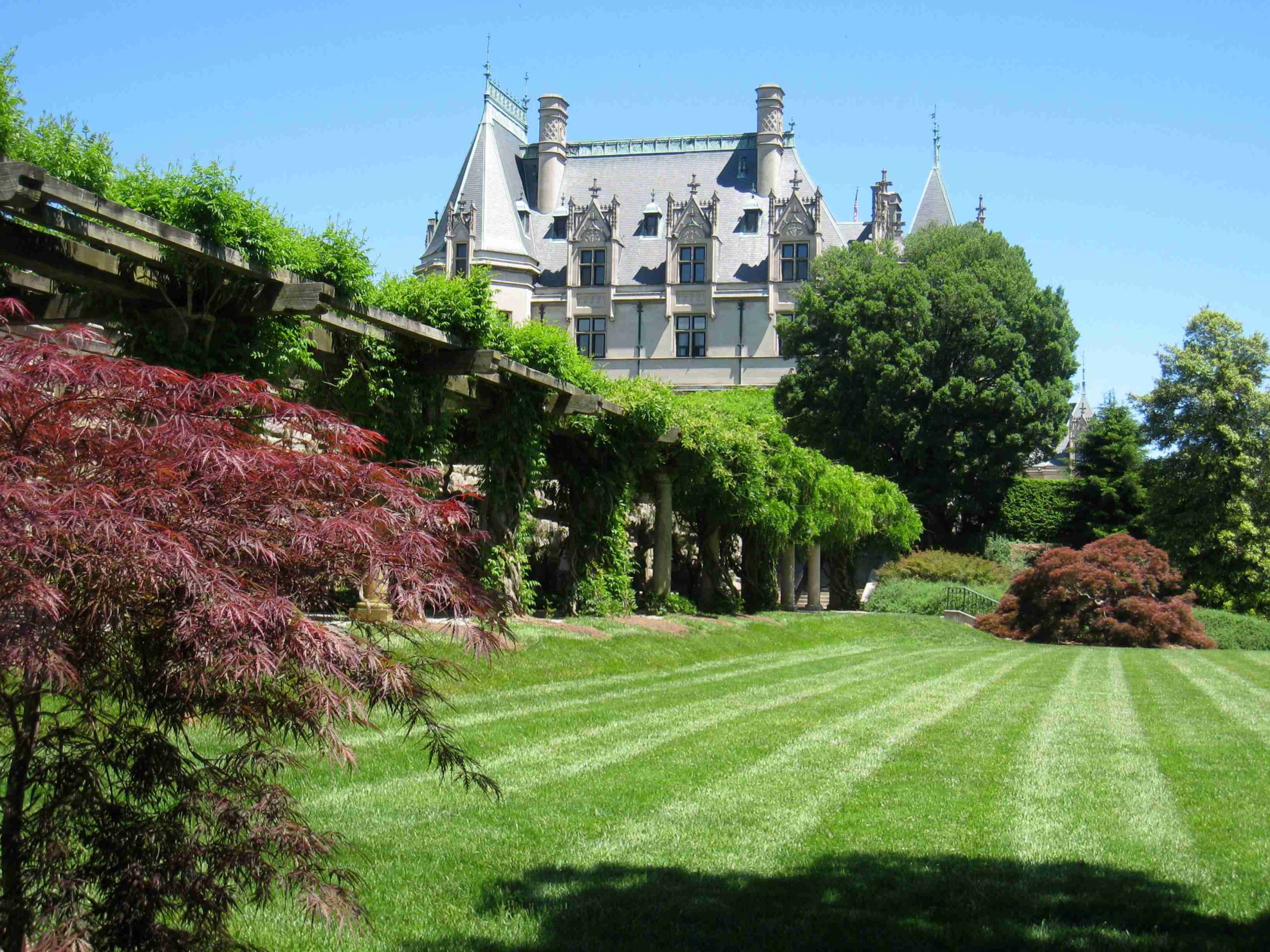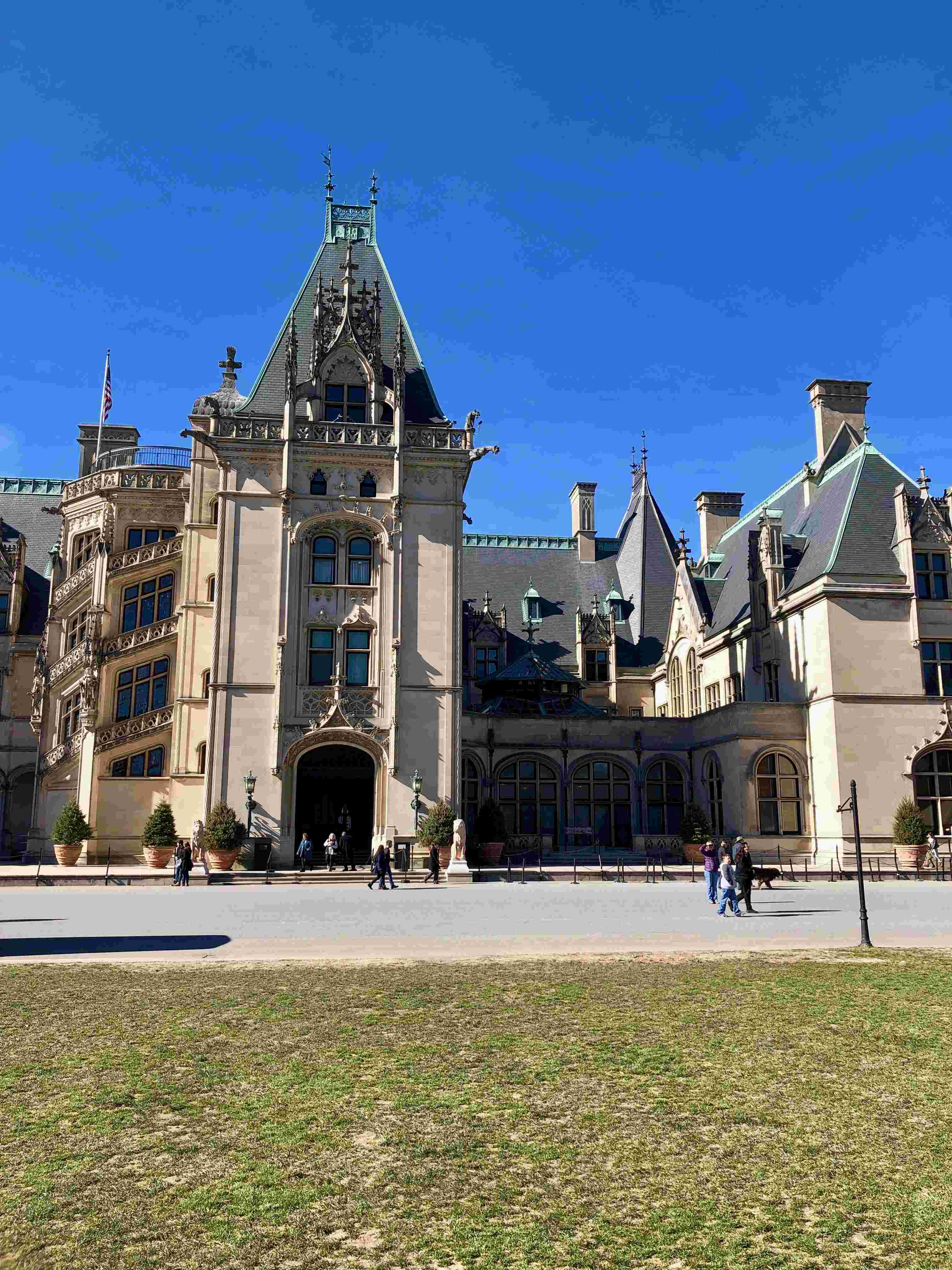The Biltmore Estate land area is a vast expanse of property in Asheville, North Carolina, originally spanning 125,000 acres when acquired by George Washington Vanderbilt II. Today, the estate covers approximately 8,000 acres, featuring the iconic Biltmore House, extensive gardens, forests, and various amenities. This reduction in size reflects the estate’s evolution from a private residence to a popular tourist destination, while maintaining its historical significance and natural beauty.
What Was the Original Size of the Biltmore Estate?

The Biltmore Estate’s land area has undergone significant changes since its inception:
- Initial Acquisition: George Washington Vanderbilt II originally purchased approximately 125,000 acres of land in the late 19th century.
- Current Size: Today, the estate covers about 8,000 acres.
- Reduction Reasons: The substantial reduction in size was primarily due to land sales, including a significant portion sold to the federal government in 1914 to create the Pisgah National Forest.
This transformation reflects the estate’s adaptation to changing times and economic realities while preserving its core historical and cultural significance.
How Is the Current Biltmore Estate Land Area Utilized?

The 8,000-acre Biltmore Estate is a multifaceted property with diverse uses:
- Biltmore House and Gardens: The centerpiece of the estate, featuring:
- 250-room Châteauesque-style mansion
- Extensive gardens designed by Frederick Law Olmsted
-
Winter Garden and Banquet Hall
-
Agricultural Areas:
- Vineyards for wine production
- Pastures for livestock
-
Farmland for crop cultivation
-
Forests and Natural Areas:
- Managed forests following historical forestry principles
-
Arboretums and nature trails
-
Tourist Facilities:
- Visitor centers
- Restaurants and shops
-
Parking areas and shuttle services
-
Accommodation:
- Hotels and inns within the estate
This diverse land use ensures the estate’s self-sustainability while offering a rich experience for visitors.
What Are the Key Geographical Features of the Biltmore Estate?
The Biltmore Estate boasts a variety of geographical features that contribute to its beauty and ecological diversity:
- Topography:
- Rolling hills
- Valleys
-
Plateaus
-
Water Bodies:
- French Broad River (bordering the estate)
-
Artificial lakes and ponds
-
Forests:
- Mixed hardwood forests
- Pine forests
-
Managed timber areas
-
Gardens and Landscaped Areas:
- Formal gardens near the house
- Walled garden
- Azalea garden
-
Spring garden
-
Agricultural Lands:
- Vineyards
- Pastures
- Crop fields
These diverse geographical features create a rich tapestry of landscapes across the estate, offering visitors a variety of experiences and vistas.
How Does the Biltmore Estate Manage Its Land Area?
The Biltmore Estate employs a comprehensive land management strategy that balances preservation, sustainability, and visitor experience:
- Forestry Management:
- Continuation of scientific forestry practices initiated by Gifford Pinchot and Dr. Carl A. Schenck
- Sustainable timber harvesting
-
Reforestation efforts
-
Agricultural Practices:
- Sustainable farming methods
- Organic gardening in some areas
-
Vineyard management for wine production
-
Conservation Efforts:
- Wildlife habitat preservation
- Water resource management
-
Invasive species control
-
Visitor Impact Management:
- Designated trails and viewing areas
- Controlled access to sensitive areas
-
Educational programs on environmental stewardship
-
Historical Preservation:
- Maintenance of historic buildings and landscapes
- Restoration projects to preserve original features
This multifaceted approach ensures the long-term sustainability of the estate while preserving its historical and natural heritage.
What Amenities Are Available Within the Biltmore Estate Land Area?
The Biltmore Estate offers a wide range of amenities catering to various interests:
| Category | Amenities |
|---|---|
| Accommodation | – The Inn on Biltmore Estate – Village Hotel on Biltmore Estate – Cottages on Biltmore Estate |
| Dining | – Stable Café – Cedric’s Tavern – The Dining Room at The Inn – Village Social |
| Recreation | – Biking trails – Hiking paths – Horseback riding – River float trips – Segway tours |
| Shopping | – Biltmore Estate shops – Antler Hill Village shops – Winery gift shop |
| Educational | – Guided tours of the house – Behind-the-scenes tours – Winery tours and tastings |
| Special Events | – Seasonal festivals – Concerts – Art exhibitions |
These amenities are strategically located across the estate, providing visitors with a diverse range of experiences while exploring the vast land area.
How Has the Biltmore Estate Land Area Evolved Over Time?
The evolution of the Biltmore Estate land area reflects broader changes in American society and land use:
- Late 19th Century:
- Acquisition of 125,000 acres by George Vanderbilt
- Implementation of scientific forestry practices
-
Establishment of the Biltmore Forest School
-
Early 20th Century:
- Sale of 86,700 acres to the federal government (1914)
- Creation of Pisgah National Forest
-
Transition from private residence to tourist attraction
-
Mid-20th Century:
- Opening of the estate to the public (1930)
- Development of tourism infrastructure
-
Expansion of agricultural operations
-
Late 20th Century to Present:
- Introduction of winery and vineyard (1971)
- Development of on-site accommodations
- Enhancement of visitor experiences and amenities
This evolution showcases the estate’s ability to adapt to changing economic and social conditions while preserving its core historical and natural values.
The Biltmore Estate land area remains a testament to American history, architectural grandeur, and sustainable land management. Its transformation from a vast private estate to a multifaceted tourist destination reflects broader changes in land use and conservation practices in the United States.
